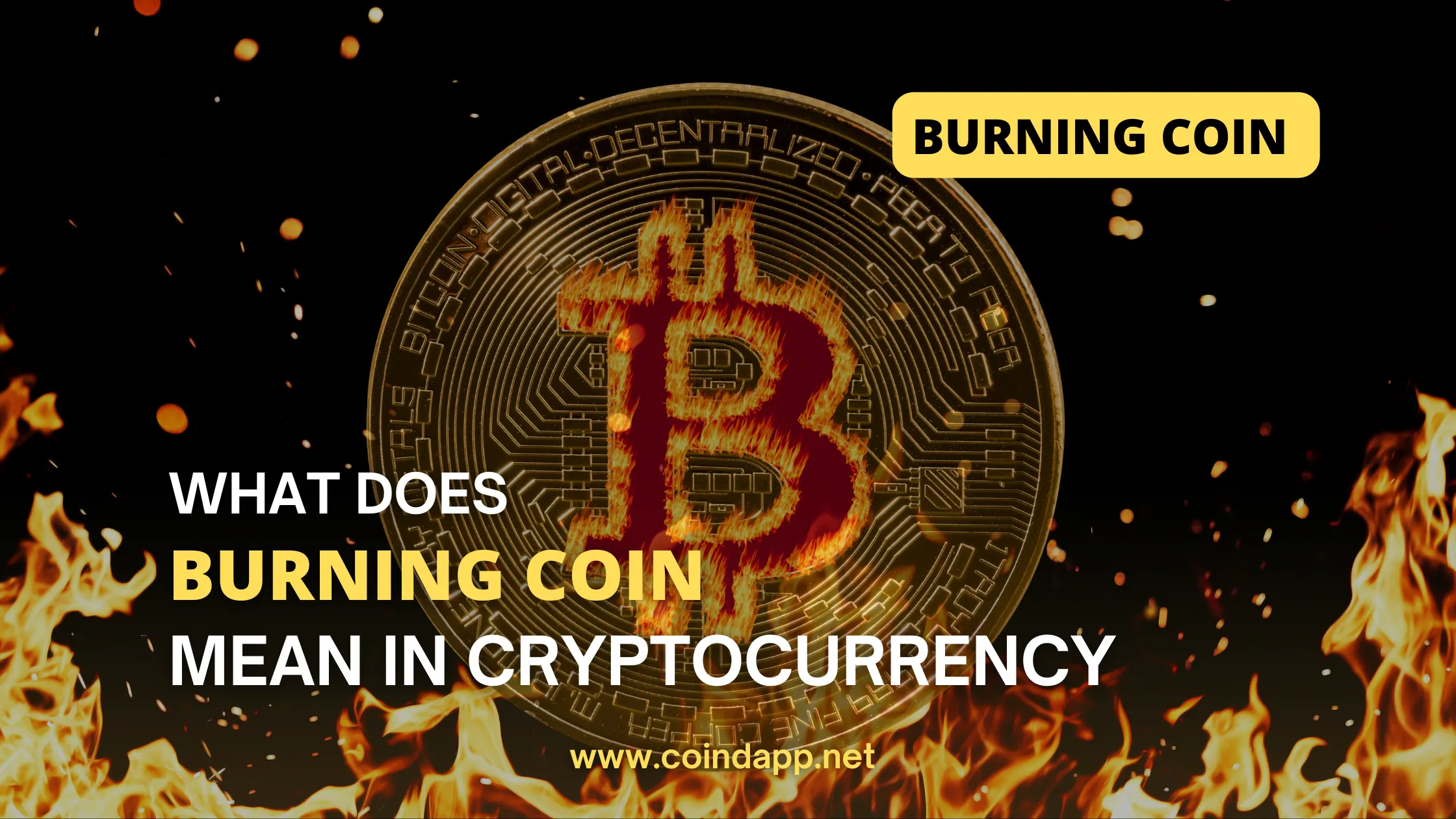When exploring the world of cryptocurrency, you may come across the term “Burning Coin” This concept plays a significant role in how certain cryptocurrencies are managed and valued. Understanding what is burning coin mean in crypto and how it works is essential for anyone looking to make investment decisions crypto world.
In this guide, we’ll break down everything you need to know about burning coin in a way that’s easy to understand, yet comprehensive. Whether you’re a seasoned crypto enthusiast or a beginner, this guide will help you grasp the importance of coin burning in the world of digital currencies.
Table of Contents
What is Burning Coin in Crypto?
Burning coin in crypto refers to the deliberate act of permanently removing a certain number of tokens from circulation to reduce the total supply and potentially increase the value of the remaining tokens.
This process is done by sending coins to an unspendable address, often referred to as a “burn address,” where the coins can never be retrieved. The main goal of burning coins is to create scarcity, which, in theory, should lead to an increase in the value of the remaining tokens if demand stays the same or increases. It’s a strategic move used by cryptocurrency projects to manage the token supply and boost investor confidence.
How Does Coin Burning Work in Crypto?
Coin burning is a straightforward process but has a significant impact on the cryptocurrency ecosystem. Here’s how it works:
- Burn Address Creation: A burn address is a wallet that no one can access because it lacks a private key. Once coins are sent to this address, they are permanently removed from circulation.
- Executing the Burn: The cryptocurrency project or community initiates the burn by sending a specified amount of tokens to the burn address. This transaction is similar to a regular crypto transaction, but instead of transferring coins to another user, the coins are essentially “destroyed.”
- Transparency on the Blockchain: Every burn transaction is recorded on the blockchain, ensuring that the process is transparent and verifiable. This transparency is crucial in maintaining trust within the community and proving that the burn has indeed taken place.
By reducing the total supply of a cryptocurrency, burning can have a profound effect on the market dynamics of that asset.
The Purpose of Burning Coins
Coin burning serves multiple purposes within the cryptocurrency ecosystem, each contributing to the overall health and sustainability of the token:
- Scarcity Creation: One of the primary reasons for burning coins is to create scarcity. By reducing the number of tokens in circulation, the value of the remaining tokens can potentially increase, benefiting holders.
- Inflation Control: Similar to how central banks manage the supply of fiat currency to control inflation, cryptocurrency projects use coin burning to prevent inflation within their ecosystems. This helps maintain the value of the token over time.
- Signaling Commitment: Regular coin burns can signal a project’s commitment to its long-term success. By actively managing the token supply, the project demonstrates its dedication to enhancing the value of its tokens for the benefit of investors and users.
What is Proof of Burn?
Proof of Burn (PoB) is a unique consensus mechanism used in some blockchain networks. Here’s how it works:
- Burning for Mining Rights: In a Proof of Burn system, participants “burn” their coins by sending them to a burn address. In return, they earn the right to mine or validate transactions on the network. Essentially, burning coins is a way of proving commitment to the network, similar to how Proof of Work requires computational power.
- Eco-Friendly Consensus: Unlike Proof of Work, which consumes significant energy, Proof of Burn is considered more environmentally friendly. Since it doesn’t require extensive computational resources, it’s seen as a greener alternative for achieving network consensus.
- Long-Term Investment: Participants in a Proof of Burn system are essentially making a long-term investment in the network by burning their coins. This commitment can contribute to the stability and security of the blockchain over time.
What are the Benefits of Burning Coins in Crypto?
Burning coins offers several benefits that can positively impact a cryptocurrency’s ecosystem:
- Potential Value Increase: The most obvious benefit of burning coins is the potential increase in value due to reduced supply. If demand remains steady or increases, the reduced supply can lead to higher prices, benefiting holders.
- Investor Confidence: Regular and transparent coin burns can boost investor confidence. Knowing that the project is actively managing its token supply to enhance value can encourage more investors to buy and hold the token.
- Network Security: In some cases, coin burning can enhance network security by reducing the total supply of tokens, making it more difficult for malicious actors to gain control over the network.
Some Popular Examples of Coin Burning
Several well-known cryptocurrencies have successfully implemented coin burning strategies:
- Binance Coin (BNB): Binance, one of the largest cryptocurrency exchanges, regularly burns a portion of its BNB tokens based on its quarterly profits. This strategy has played a significant role in increasing BNB’s value over time.
- Ripple (XRP): Ripple uses a small amount of XRP as a transaction fee, which is then burned. This process gradually reduces the total supply of XRP, helping to manage the token’s value.
- Shiba Inu (SHIB): The Shiba Inu project introduced a coin-burning mechanism to address the massive supply of SHIB tokens. This move is aimed at increasing the token’s value over time by reducing its supply.
These examples highlight how coin burning can be effectively used to support the value and utility of a cryptocurrency.
Potential Risks and Considerations of Coin Burning
While coin burning has its benefits, it’s not without risks and considerations:
- Market Manipulation: Coin burning can sometimes be used to manipulate the market. By artificially creating scarcity, projects might temporarily inflate prices, which could lead to volatility and loss of investor trust if the burn is not seen as genuine or necessary.
- Misinterpretation by Investors: Not all coin burns lead to an increase in price. If the market views the burn as a desperate attempt to prop up the value of a struggling token, it could have the opposite effect, leading to a decline in investor confidence.
- Limited Effectiveness: The effectiveness of coin burning depends on the demand for the token. If demand is low, burning tokens may not have the desired effect on price, making the strategy less impactful.
Final Thought
Coin burning is a powerful and strategic tool in the cryptocurrency world, offering the potential to influence token value, control inflation, and signal project commitment. However, like any financial strategy, it comes with risks that need to be carefully considered. Whether you’re a crypto enthusiast or an investor, understanding the mechanics and implications of coin burning is crucial for making informed decisions in the fast-evolving world of digital assets.
Disclaimer: The information provided in this guide is for educational purposes only and should not be considered financial or investment advice. Cryptocurrency investments carry a high level of risk, and you should conduct your own research or consult with a financial advisor before making any investment decisions.
For more blogs, visit coindapp blog page. Join us on Facebook, Instagram, Twitter, and Telegram.


